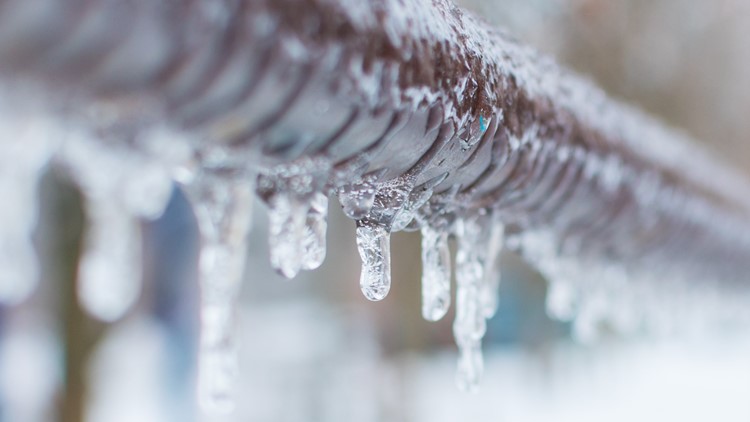Tips to Avoid Frozen Pipes in Cold Weather: Pro Guidance
Tips to Avoid Frozen Pipes in Cold Weather: Pro Guidance
Blog Article
This post in the next paragraphs relating to Prevent Frozen Pipes is relatively motivating. Try it and draw your own assumptions.

Winter can ruin your pipes, specifically by freezing pipelines. Below's exactly how to avoid it from taking place and what to do if it does.
Intro
As temperatures drop, the threat of frozen pipes boosts, potentially resulting in expensive repairs and water damage. Recognizing just how to avoid icy pipes is critical for homeowners in cool environments.
Comprehending Frozen Pipes
What causes pipelines to freeze?
Pipes ice up when subjected to temperature levels listed below 32 ° F (0 ° C) for prolonged periods. As water inside the pipelines ices up, it expands, putting pressure on the pipeline wall surfaces and possibly triggering them to burst.
Dangers and problems
Icy pipelines can result in supply of water disruptions, property damage, and costly repair work. Ruptured pipes can flood homes and cause extensive structural damages.
Signs of Frozen Water Lines
Recognizing frozen pipes early can avoid them from rupturing.
Exactly how to identify frozen pipelines
Seek reduced water flow from taps, unusual smells or noises from pipelines, and noticeable frost on revealed pipes.
Avoidance Tips
Protecting vulnerable pipelines
Wrap pipelines in insulation sleeves or utilize heat tape to secure them from freezing temperatures. Concentrate on pipelines in unheated or outside locations of the home.
Home heating techniques
Keep indoor rooms properly heated up, specifically locations with plumbing. Open closet doors to enable cozy air to flow around pipes under sinks.
Securing Exterior Plumbing
Yard hoses and exterior taps
Detach and drain pipes yard tubes prior to winter season. Mount frost-proof faucets or cover outside faucets with insulated caps.
What to Do If Your Pipes Freeze
Immediate actions to take
If you believe frozen pipelines, maintain faucets open up to eliminate pressure as the ice thaws. Utilize a hairdryer or towels soaked in hot water to thaw pipes slowly.
Long-Term Solutions
Architectural modifications
Consider rerouting pipelines far from outside walls or unheated locations. Add additional insulation to attics, basements, and crawl spaces.
Upgrading insulation
Purchase top quality insulation for pipes, attic rooms, and walls. Proper insulation helps preserve consistent temperature levels and decreases the threat of frozen pipes.
Verdict
Preventing frozen pipelines requires aggressive measures and quick actions. By recognizing the causes, indications, and preventive measures, house owners can safeguard their pipes during winter.
5 Ways to Prevent Frozen Pipes
Drain Outdoor Faucets and Disconnect Hoses
First, close the shut-off valve that controls the flow of water in the pipe to your outdoor faucet. Then, head outside to disconnect and drain your hose and open the outdoor faucet to allow the water to completely drain out of the line. Turn off the faucet when done. Finally, head back to the shut-off valve and drain the remaining water inside the pipe into a bucket or container. Additionally, if you have a home irrigation system, you should consider hiring an expert to clear the system of water each year.
Insulate Pipes
One of the best and most cost-effective methods for preventing frozen water pipes is to wrap your pipes with insulation. This is especially important for areas in your home that aren’t exposed to heat, such as an attic. We suggest using foam sleeves, which can typically be found at your local hardware store.
Keep Heat Running at 65
Your pipes are located inside your walls, and the temperature there is much colder than the rest of the house. To prevent your pipes from freezing, The Insurance Information Institute suggests that you keep your home heated to at least 65 degrees, even when traveling. You may want to invest in smart devices that can keep an eye on the temperature in your home while you’re away.
Leave Water Dripping
Moving water — even a small trickle — can prevent ice from forming inside your pipes. When freezing temps are imminent, start a drip of water from all faucets that serve exposed pipes. Leaving a few faucets running will also help relieve pressure inside the pipes and help prevent a rupture if the water inside freezes.
Open Cupboard Doors
Warm your kitchen and bathroom pipes by opening cupboards and vanities. You should also leave your interior doors ajar to help warm air circulate evenly throughout your home.

Do you really like reading about 6 Ways to Prevent Frozen Pipes? Post a review down below. We'd be delighted to see your insights about this blog. Hoping that you visit us again soon. Sharing is nice. You never know, you may very well be doing someone a favor. We treasure your readership.
Book Inspection Report this page